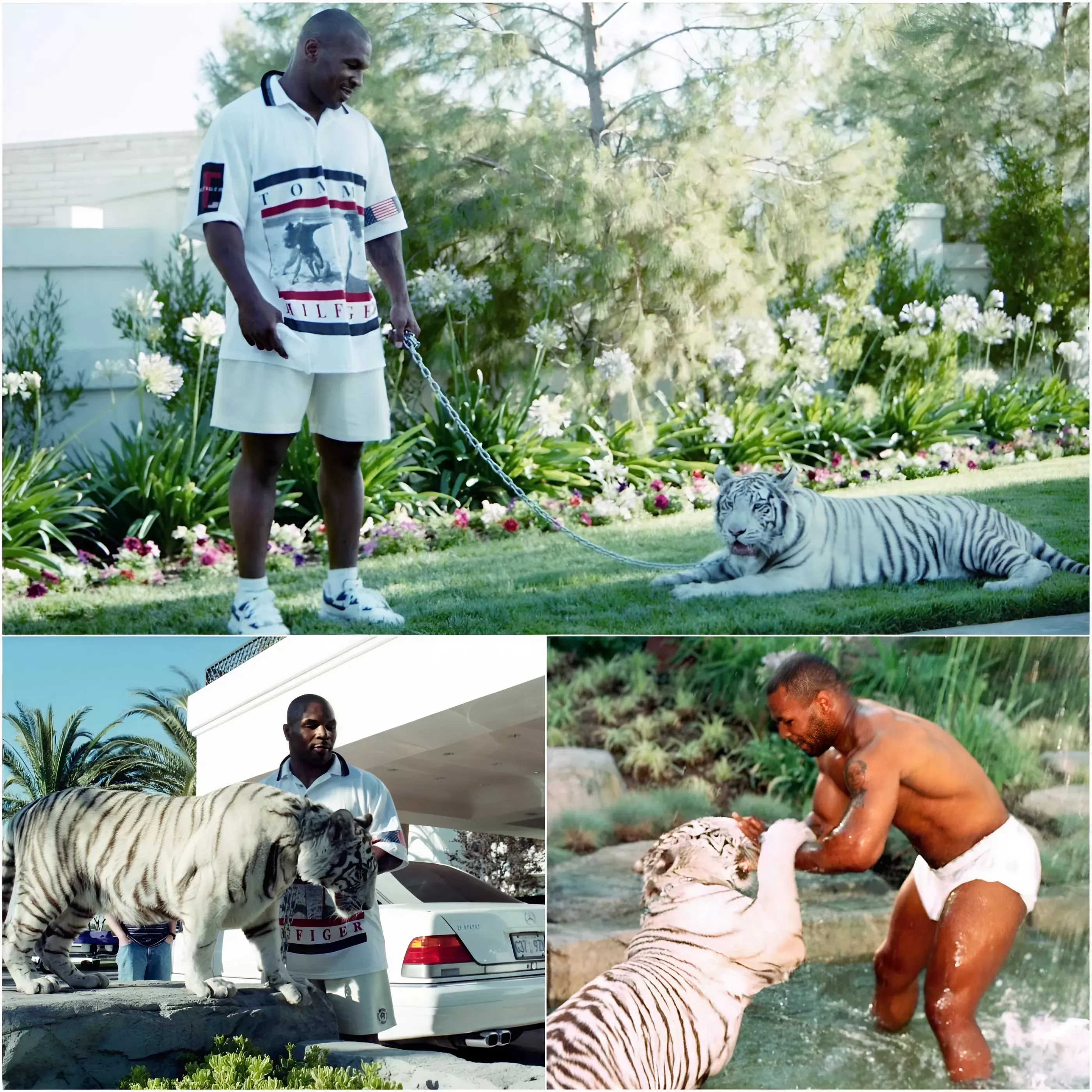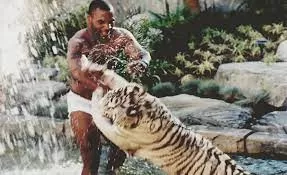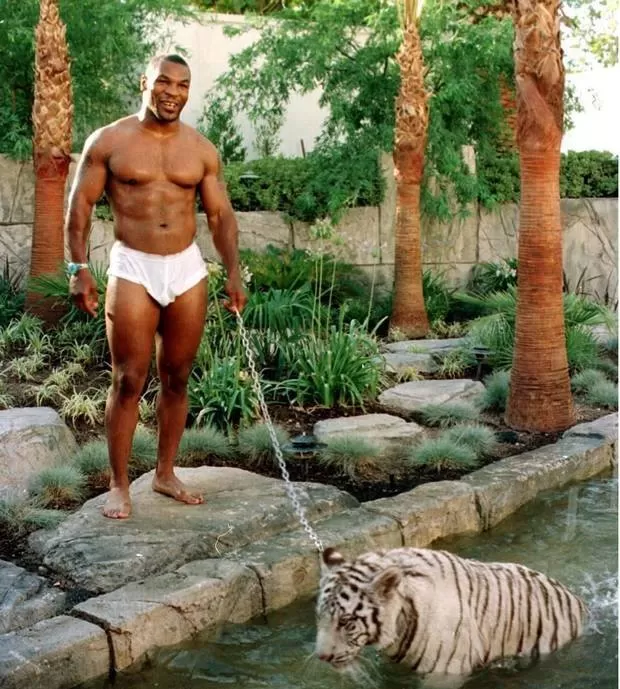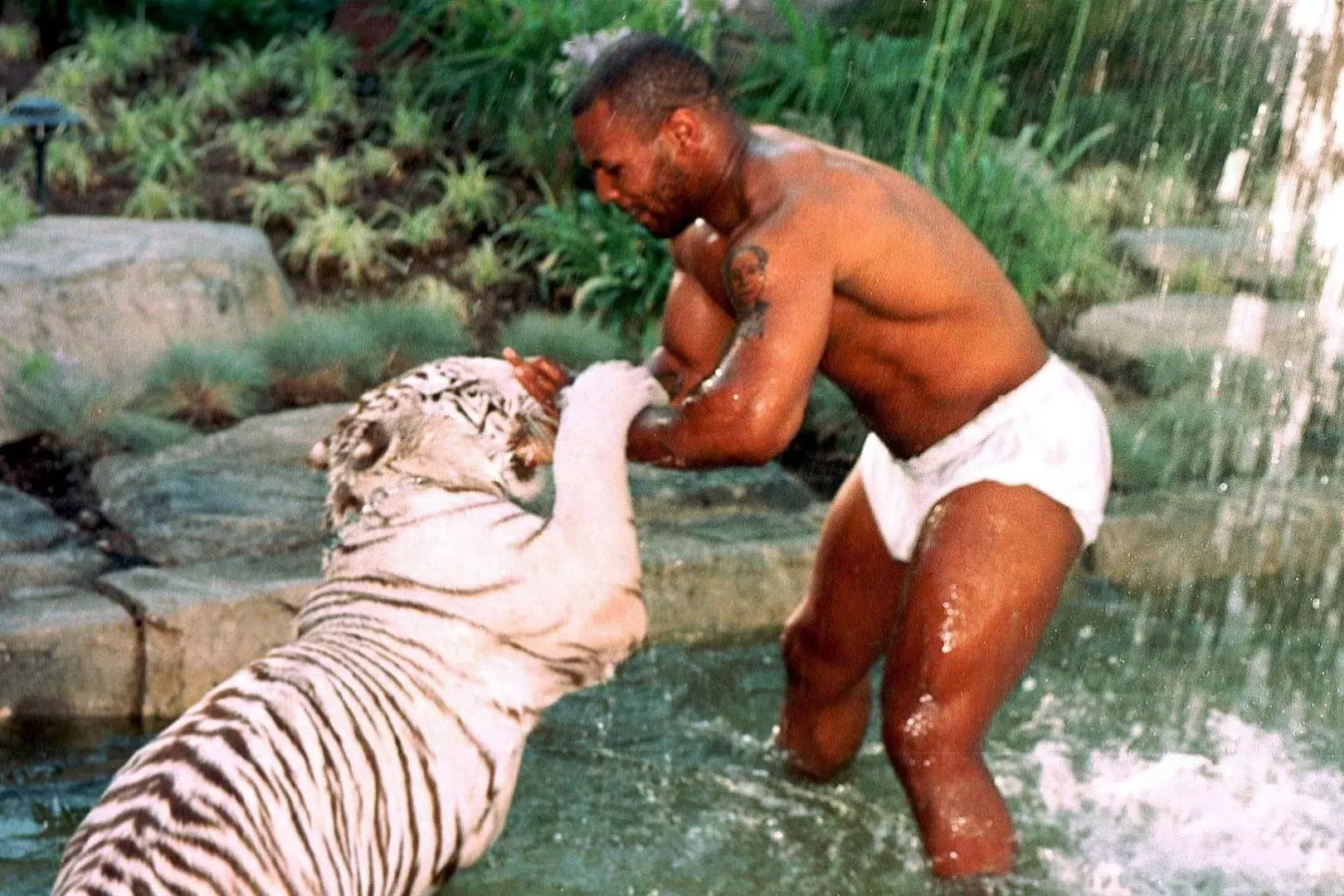Mike Tyson owned three tigers in the 1990s and 2000s, paying $50,000 for each of his “pets”
In the era of excess and extravagance that defined the 1990s and early 2000s, few figures embodied the over-the-top lifestyle more than the legendary boxer Mike Tyson. Known for his larger-than-life persona both in and out of the ring, Tyson’s penchant for the unconventional and the ostentatious is perhaps best exemplified by his ownership of three pet tigers during this period.
At the height of his fame and success, Tyson made the surprising decision to acquire not one, but three Siberian tigers, each of which came with a hefty price tag of $50,000. These majestic creatures, which Tyson affectionately referred to as his “pets,” were a testament to the boxer’s boundless wealth and his appetite for the extraordinary.

“Mike Tyson was never one to do things in moderation,” remarked sports historian, Dr. Emily Watkins. “When he wanted something, he went all-in, and his acquisition of three tigers was just the latest example of his over-the-top indulgences.”
The tigers, which Tyson housed in a private compound on his estate, quickly became a source of fascination and intrigue among the media and the public. Footage and images of the former heavyweight champion interacting with the massive felines only served to heighten the sense of awe and disbelief surrounding this unique arrangement.
“It was just surreal to see this larger-than-life figure, this feared and revered boxer, casually petting and playing with these wild animals,” said one long-time Tyson fan. “It was a stark contrast to the brutality he displayed in the ring, and it really underscored just how eccentric and unpredictable he could be.”

However, Tyson’s ownership of the tigers was not without its challenges and controversies. The care and maintenance of these exotic pets proved to be a significant financial and logistical burden, and there were concerns raised about the safety and ethical implications of keeping such dangerous animals as household companions.
“Tigers are not domesticated animals, and they require a level of specialized care and attention that is simply not feasible for the average person to provide,” explained wildlife expert, Dr. Sarah Landers. “Tyson’s ownership of these tigers was not only potentially dangerous, but it also raised important questions about the welfare and exploitation of wild animals.”

Despite the controversies and criticisms, Tyson remained steadfast in his affection for his tiger “pets,” even going so far as to construct a private zoo-like enclosure on his property to accommodate them. However, the financial and legal challenges eventually led Tyson to relinquish ownership of the tigers, with the animals eventually being transferred to a specialized wildlife sanctuary.
“In many ways, Mike Tyson’s ownership of those tigers was a microcosm of his larger-than-life persona and his desire to push the boundaries of what was considered normal or acceptable,” reflected sports journalist, Tom Wilkins. “It was a quintessential example of the excesses and indulgences that defined the Tyson era, and it’s a story that continues to captivate and fascinate fans and observers alike.”

As the boxing legend’s legacy continues to be re-examined and reinterpreted, the tale of his pet tigers stands as a testament to the unique and often unconventional nature of Mike Tyson’s life and career, and serves as a reminder of the enduring appeal of the larger-than-life figures who have shaped the world of sports and entertainment.
Sports





